 |
 |
 |
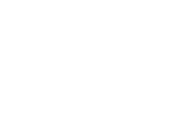
|
Wim Delvoye
Panem et Circenses II, 1989-1990
Stained glass, metal, enamel paint
209 x 304 x 110 cm
Photo: Studio Wim Delvoye, Belgium, © Adagp, Paris 2016 / Wim Delvoye
|
|
 |
WIM DELVOYE
Since the beginning of his career, which began in the late 1980s, Wim Delvoye has sought to shift the boundaries that traditionally separate popular culture and art, decorative arts and the “fine arts”, the old and the contemporary, the noble and the unclean. “In a word, Wim Delvoye creates oxymorons,” writes Michel Onfray. His works indeed appear to be shot through with various contrary elements, suspended somewhere between seduction and dissonance.
|

|
Posted 9 November 2016
|
Share this:
|
|
Curator Enrico Lunghi
Since the beginning of his career in the late 1980s, Wim Delvoye has sought to shift the boundaries that traditionally separate popular culture and art, decorative arts and the “fine arts”, the old and the contemporary, the noble and the unclean. “Basically, Wim Delvoye makes oxymorons,” writes Michel Onfray: his works indeed appear to be shot through with various contrary elements, suspended somewhere between seduction and dissonance.
On the occasion of its 10th anniversary, Mudam Luxembourg invites the Belgian artist, who marked the opening of the museum with the creation of his Chapelle, to occupy its spaces. Spread over two floors, the exhibition presents a wide panorama of his twenty-five years of artistic production, reflecting the formal variety as well as the conceptual coherence of his work. It also bears witness to the special relationship Delvoye maintains with Luxembourg: the Beaumont Gallery devoted a solo exhibition to him in 1994; at the same time, his works appeared in public and private collections in Luxembourg, starting with the Musée national d’histoire et d’art (MNHA) and the Grand Ducal Court; he then participated in several group exhibitions organized by Casino Luxembourg which, in 2007, in collaboration with Mudam, also presented for the first time all of his ambitious Cloaca project.
Undermining the retrospective format, Delvoye invites us to stroll through his singular work via four spaces with contrasting universes. On the ground floor, the first gallery brings together several key works from his early career directly inspired by the decorative arts of his native Flanders, concentrating on domestic and urban spaces, while the second gallery is oriented around the concept of “origins”: the prosaic ones, common to every human being, but also those of art and his own practice. Upstairs, the third gallery addresses the issue of ornament and the appropriation of forms borrowed from art history, while the last space, conceived as a landscape, hosts “monuments” erected in homage to everyday life, including his recent large Gothic-inspired sculptures.
Wim Delvoye was born in 1965 in Wervik, Belgium.
He lives and works in Ghent and Brighton.
|
|
|
|
|
|
|
THE HISTORY OF A PRESENCE
I first saw a work by Wim Delvoye in 1992 at documenta IX in Kassel. The tiled floor embellished with motifs of human excrement presented by the young artist – he was only 27! – : such works proved, I said to myself, that the history of art has plenty of good days ahead of it whatever the views of a minimalist like Carl Andre might be. I briefly met Delvoye at the event but I didn’t really get the chance to talk to him until the following year when he was preparing an exhibition for the Galerie Beaumont in Luxembourg.
At that time his name was already beginning to be known here: it was common knowledge in art circles that HRH Grand Duchess Joséphine- Charlotte was interested in his work, that she had visited him in his studio, and that she had purchased pieces for her collection.
For the preview, the gallerist Martine Schneider had succeeded in convincing Jan Hoet – the famous director of Ghent’s contemporary art museum, and the director of documenta IX – to come to Luxembourg. For that audience, he had to employ all his powers of oratory and persuasion in his discussion
of Delvoye’s works. The usual exhibition-going public in Luxembourg were clearly somewhat put out by what they saw: maps with shapes like domestic objects, shovels decorated with coats of arms dating from the Middle Ages, and the gear from a building site – barriers, concrete-mixers, tools and signs – in carved and decorated wood.
However, the director of the Musée national d’histoire et d’art, Paul Reiles, had no hesitation in buying the building-site exhibit, entitled Chantier – Labour of Love (1992), for his collections. I still like to think, though I have never checked, that this was Delvoye’s first work to enter a public collection.
Since then, Delvoye’s work has been presented on a surprisingly regular basis in the Grand Duchy. At its opening exhibition in March 1996, the Casino Luxembourg – Forum d’art contemporain showed Chantier – Labour of Love alongside a selection of the national museum’s recent purchases. In 2001 the video Sybille I (1998) was presented there in the exhibition Confidences. The same year Delvoye contributed to the outdoor exhibition Sous les ponts, le long de la rivière… that several associated Luxembourgish institutions had organized in the Pétrusse and Alzette valleys. He chose to exhibit the very beautiful bronze sculpture Trophy (1999) on the edge of a wood, in the bend of a road then being constructed up to Mudam. This too later entered the collections of the national museum and is today installed in the museum’s grounds, where it is now an essential feature and never fails to surprise wandering visitors. [...]
By inviting Delvoye to mount an exhibition that offers as complete as possible an overview of his artistic career, Mudam is part of a longstanding practice evident throughout the Grand Duchy. By doing so to mark its tenth anniversary, the museum is confirming the remarkable place that the work of this internationally recognized artist now holds in the evolution of the country’s contemporary art institutions, as well as of public and private collections.
Enrico Lunghi
Director, Mudam Luxembourg
Curator of the exhibition Wim Delvoye
Text: exerpt of the introduction from the catalogue Wim Delvoye(Autors: Sofia Eliza Bouratsis, Enrico Lunghi, Michel Onfray, Tristan Trémeau), 2016, p. 7
|

|

|

|

|
|
|
Wim Delvoye
Bustelli twisted, 2010
Peinture à l’émail sur porcelaine
27 x 14 x 16 cm
Collection Porzellan Manufaktur Nymphenburg, Munich
Photo : Studio Wim Delvoye, Belgique, © Adagp, Paris 2016 / Wim Delvoye
|
|
|
|
|
Wim Delvoye
Untitled (Koi), 2006
Tattooed pigskin on polyester mould
68 x 46 x 132 cm
Private collection, New York
Photo: Studio Wim Delvoye, Belgium, © Adagp, Paris 2016 / Wim Delvoye
|
|
|
|
|
Wim Delvoye
Maserati, 2014
Embossed aluminium
80 x 183 x 440 cm
Photo: Studio Wim Delvoye, Belgium, © Adagp, Paris 2016 / Wim Delvoye
|
|
|
|

|

|

|
THE INVENTION OF THE EVERYDAY
The works presented in this gallery are characteristic of the first “shifts” undertaken by Wim Delvoye in the 1980s: everyday objects, associated with manual or domestic work, are ornamented with motifs from the decorative arts, such as traditional Delft earthenware, while the construction site penetrates the domestic environment via the precious hand-crafted facture with which it is reproduced and decorated. The iconography he deploys is deliberately anachronistic and bears the memory of the golden age of Dutch decorative arts, thus accomplishing the ambition vaunted by Delvoye at the beginning of his career to “be provincial and do something internationally.” Here, ornamentation relates to identity, functionality and the value of industrial objects, unless it is the banality of the latter that “trivializes” the emblems and expertise of the past.
By forcing these seemingly contradictory worlds to coexist within the same object
– the ornament and the tool, industry and craft, the domestic and the urban, the heraldic
and the contemporary – Delvoye claims to be seeking the “right emulsion” so that each
element remains identifiable. In a spirit that is reminiscent of Belgian surrealism, his
work is characterised by a re-enchantment of everyday life. Like the imaginary maps that
make up his Atlas, with which the exhibition opens, he uses imagery to substitute
another reality, tinged with a subtle sense of strangeness and astonishing subversion.
|
|
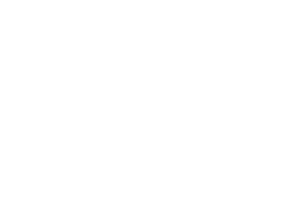
Wim Delvoye
Atlas #5, 2004
Oil on canvas
163 x 227 cm
Photo: Studio Wim Delvoye, Belgium, © Adagp, Paris 2016 / Wim Delvoye
|
|
|
|
|

|

|

|
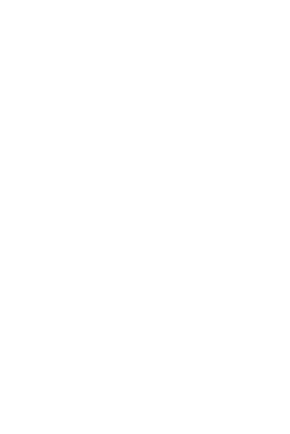
Wim Delvoye
Cloaca Quattro, 2004-2005
Mixed media
340 x 210 x 210 cm
© ADAGP, Paris, 2016 / Wim Delvoye
|
|
ORIGINES
“We are born between feces and urine.” This phrase attributed to Augustine of Hippo and stamped with the hallmark of humility, seems to reflect the intention of a whole section of Wim Delvoye’s work: to translate the origins of human life through the triviality of its corporeality. In many ways the body forms a limit, the overcoming of which has always been a challenge and a temptation for artists. Its outer shell, the skin, and the materiality of its excretions (which is often taboo) are Delvoye’s favourite themes. Thus, the ambitious Cloaca project, composed of technical and biochemical systems that mimic the functioning of the digestive system is, according to the artist, “the only human portrait” in his entire body of work. The material that these machines
produce, the most “egalitarian” there is, invites numerous interpretations, starting with a questioning of the art system and the values it conveys. It was also in this spirit that Delvoye installed the famous Art Farm in China from 2003 to 2010, devoted to raising tattooed pigs: often demonized and yet so close to humans, for the artist the pig represents the “democratic being” par excellence.
The question of origins is also at the heart of the series of Early Works, a title he gave
to a collection of his childhood drawings, playing on classifications peculiar to the field
of art history studies. One cannot help but identify, in retrospect, signs of his future
artistic vocation and the nature of his work itself.
|
|
|
|
|

|

|

|
“ORNAMENT IS A CRIME”
In 1908, the Viennese architect Adolf Loos published his most famous essay Ornament and Crime, advocating the complete abandoning of architectural ornament. A veritable manifesto of modernist architecture, this conception was soon to accompany the artistic spirit of the twentieth century. Nearly a century later, Wim Delvoye states: “I am aware that ornament may be a crime, but whatever the case may be, I commit the crime.” Swimming against the tide of artistic orthodoxy, his artworks indeed often proceed from an ornamental gesture which acquires a conceptual dimension through being put into practice. When applied to impersonal and industrial objects, as in Carved Tyres, he overthrows nature and reconciles, in a single motion, industry, fine arts and decorative arts.
Thanks to the prowess that enables the technologies of computer graphics, Delvoye also reinterprets the artistic forms of the past. They become malleable in his hands, materials to generate new forms, perverted motifs he can reproduce, display, multiply. These references include his collection of nineteenth-century academic sculptures. After being scanned, they are distorted or duplicated, like Rorschach cards, before being materialized in porcelain or in bronze. The process is similar for the crucifixion motif, which the artist employed several times between 2005 and 2010: he sees it as a cross, a geometric shape, “which can”, he says, “by applying new technologies, be turned into DNA helices, Möbius strips, circles, sine waves.”
|
|
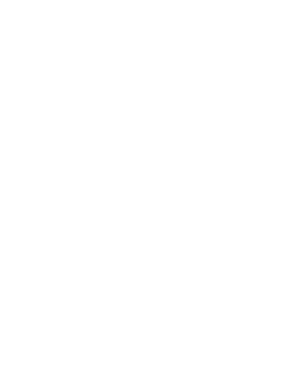
Wim Delvoye
Untitled (Truck Tyre),?2013?
Hand craved truck tyre
148 x 148 x 60 cm
Photo: Studio Wim Delvoye, Belgium, © Adagp, Paris 2016 / Wim Delvoye
|
|
|
|
|

|

|

|

Wim Delvoye
Sweetheart, 2003
Print on fabric
540 x 675 cm each
Photo: Studio Wim Delvoye, Belgium, © Adagp, Paris 2016 / Wim Delvoye
|
|
MONUMENTS
Created in response to a commission from Mudam for its inauguration in 2006, Chapelle was an important moment in Wim Delvoye’s career, launching a series of increasingly impressive works in terms of scale and degree of finish, directly inspired by Gothic architecture and its characteristic “stone filigree”, which he has studied at length. “At first”, he explains, “I built these [pieces] in a kind of ironic manner, but now I have a better grasp of construction principles and respect for materials, and I take the work very seriously. I looked at thousands of drawings, plans, elevations and measurements in the books that I have collected.” Taking the form of architectural elements (chapels, towers, pergolas) or sculptures directly inspired by vehicles, devices or everyday objects (trucks, bulldozers, cement mixers, suppositories), these sculptures establish a link between the “high technology” of medieval construction and that of our era. In the same spirit of connection, Delvoye has also worked for several years with craftsmen, creating works in which oriental motifs produced using the repoussé technique are combined with Western “symbols” such as the
iconic Maserati.
In the final gallery, many of these major works enter into dialogue with a group of large-format photographs from the Mountains series, originally created between 2000 and 2003, in which brief inscriptions that one might expect to find written in haste on Post-it notes or scrawled on public lavatory walls acquire a colossal and timeless dimension, like monuments erected in homage to the everyday.
|
|
|
|
|

|

|

|
GRAND HALL
SUPER CLOACA
Developed between 2000 and 2010, Cloaca is a large-scale project that includes ten digestive systems of different sizes, numerous drawings, logos, a range of derivative objects and the produce from the machines, vacuum packed or in jars. A piece like Mosaic (90-400-DOC) (1990), presented at Documenta IX in 1992, heralded this ambitious group of works. Each of the Cloacas, from the Cloaca Travel Kit (2009-2010), contained in a suitcase, to the Super Cloaca (2007), about the size of a container, perfectly simulates human digestion, from feeding to the evacuation of excreta.
Wim Delvoye worked closely with a team of scientific experts in order to successfully reproduce this complex biological process. Within Delvoye’s body of work, Cloaca could be included in the period called “democratic”, marked by the desire to produce art that is totally “egalitarian”. What could be more democratic and more egalitarian, in fact, than defecation? While the main aim of the artist was to build an unnecessary “zero machine”– "I sought a complicated thing that is expensive and hard to make and which leads to nothing”, he says – Cloaca generates many metaphorical meanings and questions both the limits of art and taste-based judgments.
|
|
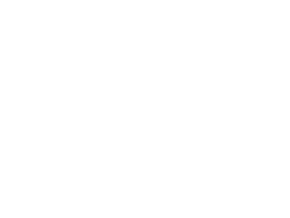
Vue de l'exposition Wim Delvoye, 02.07.2016 - 08.01.2017, Mudam Luxembourg. Wim Delvoye, Super Cloaca, 2007, Courtesy Studio Wim Delvoye, Belgique © Photo : Remi Villaggi / Mudam Luxembourg
|
|
|
|
|
|
|
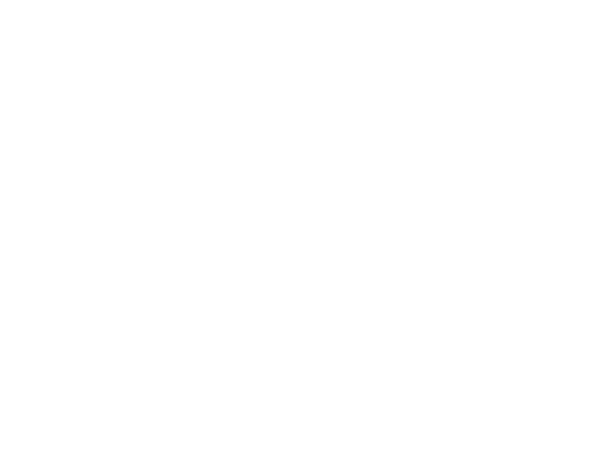
ON PERMANENT DISPLAY AT MUDAM
Chapelle, 2006
Stained glass and laser-cut Corten steel
480 x 1080 x 705 cm
Commission and Collection Mudam Luxembourg
Acquisition 2006
© Photo: Rémi Villaggi, Mudam Luxembourg
Trophy, 1999
Bronze, Corten steel base
153 x 325 x 145 cm
Collection Musée national d’histoire et d’art, Luxembourg
© Photo : Andrés Lejona, Mudam Luxembourg
|
|
|
|
|

|

|

|
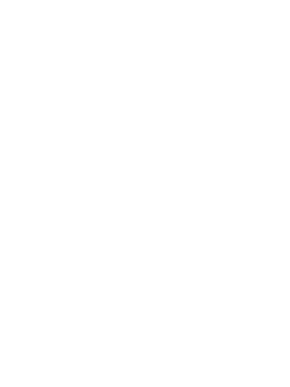
Wim Delvoye
Concrete Mixer,?2012?
Laser-cut Corten steel
180 x 170 x 100 cm
Photo: Studio Wim Delvoye, Belgium, © ADAGP, Paris, 2016 / Wim Delvoye
|
|
WITHIN THE FRAMEWORK OF THE EXHIBITION
EXHIBITION CATALOGUE
The exhibition is accompanied by a catalogue bringing together a large number of images, new essays by Sofia Eliza Bouratsis and Tristan Trémeau, along with the text “Vitraux in vitro et in vivo” written by Michel Onfray in 2006, on the occasion of the creation of Chapelle (an artwork permanently installed at Mudam Luxembourg).
Sold in bookshops and at Mudam Boutique
French. English
Authors: Sofia Eliza Bouratsis, Enrico Lunghi, Tristan Trémeau, Michel Onfray
Edition : Mudam Luxembourg, Somogy éditions d’Art
ISBN 978-2-757210-93-2
224 pages
Price : 35 €
© Studio Wim Delvoye,
Belgium
EVENTS
13.11.2016, Noon
SUPER CLOACA ReLOADED
Superbrunch with Wim Delvoye and Enrico Lunghi
within the framework of Luxembourg Art Week
13.11.2016, 3 pm
TALK
With Sofia Eliza Bouratsis and Tristan Trémeau about
the catalogue of the exhibition Wim Delvoye
GUIDED TOURS FOR 3-5 YEARS OLD CHILDREN
ONCE UPON A TIME…
EN – 03.09.2016, 10 - 11 am
FR – 10.09.2016, 10 - 11 am
DE – 17.09.2016, 10 - 11 am
Fairy tales for children, illustrated by artworks on show, Within the framework of the exhibition Wim Delvoye. The fairytale tours can also be booked on other date for private groups (schools, daycare...).
Free entrance for children. Regular entrance fee for adults.
Booking required: workshop@mudam.lu ; t +352 45 37 85 531
See the Agenda>
MUDAM LUXEMBOURG
Musée d’Art Moderne Grand-Duc Jean
3 Park Dräi Eechelen, L-1499 Luxembourg-Kirchberg
+352 45 37 85 1
info@mudam.lu
www.mudam.lu
|
|
|
|
|
|
|
|
|
|


